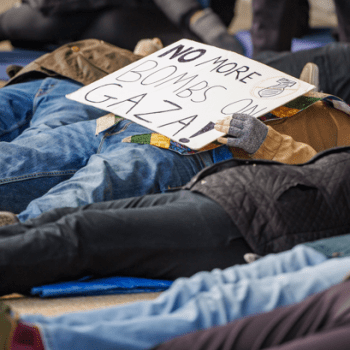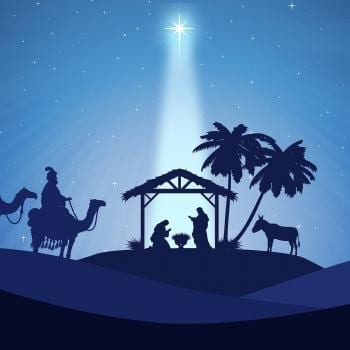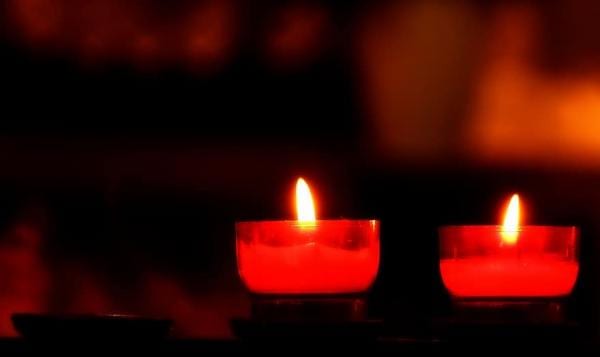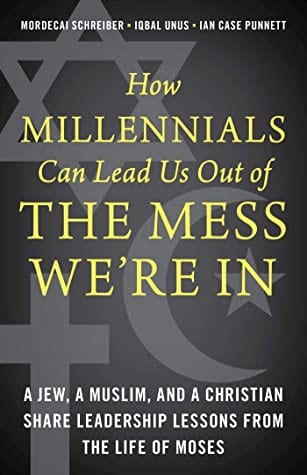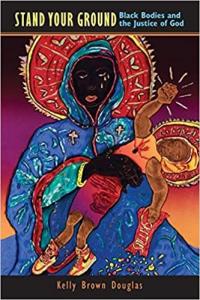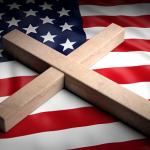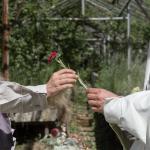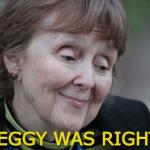This post is part of a special Patheos conversation: “Modern Magi on the Meaning of Christmas,” featuring myself, Scot McKnight, Nadia Bolz-Weber, and Billy Kangas.
As his latest contribution to our ongoing “Modern Magi” series, Billy Kangas posted a rich reflection today, an in-depth reading of 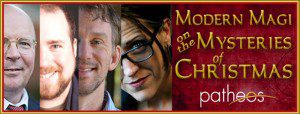 Russian artist Anton Rublev’s nativity icon. I hadn’t seen the image before, though I am well familiar with Rublev’s famous icon of the Trinity–in the form of the three visitors who appeared before Abraham at the “great trees of Mamre” (Gen. 18). As Kangas pointed out, our discussion has turned the meaning that the birth of Jesus has in a world of danger. Nadi Bolz-Weber suggested that we need to put Herod back into the Christmas, so that our Christmas reflections are as realistic (and as truly life-giving) as the original version.
Russian artist Anton Rublev’s nativity icon. I hadn’t seen the image before, though I am well familiar with Rublev’s famous icon of the Trinity–in the form of the three visitors who appeared before Abraham at the “great trees of Mamre” (Gen. 18). As Kangas pointed out, our discussion has turned the meaning that the birth of Jesus has in a world of danger. Nadi Bolz-Weber suggested that we need to put Herod back into the Christmas, so that our Christmas reflections are as realistic (and as truly life-giving) as the original version.
 Russian artist Anton Rublev’s nativity icon. I hadn’t seen the image before, though I am well familiar with Rublev’s famous icon of the Trinity–in the form of the three visitors who appeared before Abraham at the “great trees of Mamre” (Gen. 18). As Kangas pointed out, our discussion has turned the meaning that the birth of Jesus has in a world of danger. Nadi Bolz-Weber suggested that we need to put Herod back into the Christmas, so that our Christmas reflections are as realistic (and as truly life-giving) as the original version.
Russian artist Anton Rublev’s nativity icon. I hadn’t seen the image before, though I am well familiar with Rublev’s famous icon of the Trinity–in the form of the three visitors who appeared before Abraham at the “great trees of Mamre” (Gen. 18). As Kangas pointed out, our discussion has turned the meaning that the birth of Jesus has in a world of danger. Nadi Bolz-Weber suggested that we need to put Herod back into the Christmas, so that our Christmas reflections are as realistic (and as truly life-giving) as the original version.It is no doubt a shame when we overlook so much of the significance of the birth of Christ as a threat to the powers of this world. It’s all right there, in the gospels. In Matthew, Jesus’ birth suggests that the new king is here. In the royal line of David, grafted in through Joseph’s adoptive fatherhood, the announcement of Jesus’ birth involved a claim to the royal Messianic identity. John the Baptist preached about the coming of the Messiah, and proclaimed that, whereas John only baptized with water, Jesus would baptize with “he Holy Spirit and fire. His winnowing fork is in his hand, and he will clear his threshing floor, gathering his wheat into the barn and burning up the chaff with unquenchable fire.” John’s description of Jesus’ ministry of Jesus called for apocalyptic imagery–the kind fit for prophets and Spirit-bearers.
As Jesus’ sets out in his first public act of preaching, following his baptism and temptation in the wilderness, Matthew gives us another prophecy:
the people living in darkness
have seen a great light;
on those living in the land of the shadow of death
a light has dawned.
And the text tells us that, “From that time on Jesus began to preach, “Repent, for the kingdom of heaven has come near.” (Matt 4:16-17).
But if we go back 30 or so years prior to John the Baptist’s preaching and to the beginning of Jesus’ public ministry, it seems a bit odd that Herod responded the way he did–with reckless, desperate violence–to the announcement of the birth of this baby–by a poor mother in an obscure section of Galilee, well outside the power center of Jerusalem. Granted, despotic autocrats aren’t known for measured reason, but still.
Matthew’s message in setting forth the conflict between the baby and King Herod is clear: Jesus came to bring a new order of things. To announce and usher in the new kingdom. As Richard Horsely put it in Jesus and the Spiral of Violence, through Jesus, “God was bringing an end to the demonic and political powers dominating his society.” And David Kaylor summarized:
Not the end of the world but the end of an era, the end of a political, economic, social, religious system that falls far short of God’s will, and the beginning of a new order in which God’s will comes to fruition.” Jesus “ rejected the current situation and sought the renewal of God’s people.
So though he was “infant lowly,” one of poor estate, Matthew tells us there was something about Jesus that signified a direct affront to the powers and principalities of the world. The kingdom of Jesus would whittle away at the empire of the world–even if it was not quite in the way or in the manner expected. That new kingdom would come in and through the power of the Spirit of God–the Spirit of life and liberation. That is a threat to those wedded to the imperial powers, and to those who place their hopes in those powers for their enduring legacy and for their final validation.



